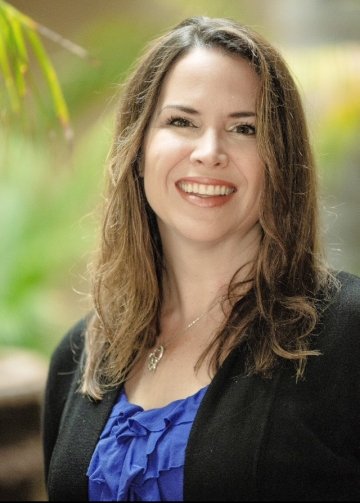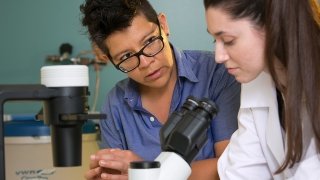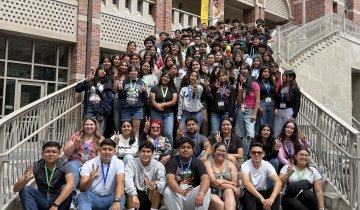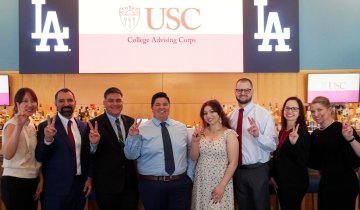On the surface, the polite, collegial atmosphere that prevails at the typical university campus seems laudable. But faculty members from racially minoritized groups regularly experience discrimination, much of it subtle. Colleagues might notice such micro-aggressions but hesitate to act, since no one wants to confront the offender for fear of making waves. That silence too often extends to victims of discrimination, who prefer to dismiss the offense out of fear of repercussions should they upend the “culture of niceness” in the workplace. The outcome? The politeness of well-intentioned faculty and administrators becomes toxic, preventing the type of open dialogue that is vital to ensuring equity.
As members of California Lutheran University’s faculty and leadership began to look inward in an effort to determine why they were having trouble recruiting, hiring and retaining Black, Latina/o and Native American faculty, they came to view their own culture of niceness as part of the problem. “I’m not sure if it is risky” to speak up, one longtime faculty member reported, “but people feel like it is.” A more recent faculty hire determined that it was risky to be outspoken prior to receiving tenure, so she would “smile and nod” rather than risk confrontation.
Cal Lutheran is a private liberal arts institution affiliated with the Evangelical Lutheran Church in America. Located in Thousand Oaks, Calif., approximately 50 miles northwest of downtown Los Angeles, it boasts an increasingly diverse student population. More than half of the incoming freshmen in 2016–17 were from racially minoritized groups. Cal Lutheran recently became a Hispanic-serving institution, a federal designation for accredited universities with an undergraduate population that is at least 25 percent Latino, a significant proportion of them low-income and first-generation college students. But efforts to recruit a faculty reflective of that diversity were falling short. And now, through a process of self-examination facilitated by USC’s Center for Urban Education (CUE), it was becoming clear that the polite atmosphere was inhibiting honest conversations.
CHANGE FROM WITHIN
“This great culture in which everyone is nice to everyone else can also make it hard to speak up when things need to be pointed out,” says Leanne Neilson, Cal Lutheran’s provost and vice president for academic affairs. “Certainly we want to maintain respect for each other, but we also want to be able to have those difficult dialogues.”
Many institutions of higher learning struggle to recruit a racially diverse faculty. But Cal Lutheran has distinguished itself by aggressively setting out to identify problems with its processes and take proactive steps to change, with guidance from the USC Rossier-based center. The efforts have already begun to pay off: During the 2016–17 academic year, Cal Lutheran filled 11 faculty and one dean position; two-thirds of the hires were people of color, including two Latino/as, two blacks and three Asians in addition to a Latina hired as dean of the College of Arts and Sciences.
CUE has become a national leader in helping two- and four-year colleges and universities close the gaps that adversely affect historically underrepresented racial and ethnic groups. Its Equity Scorecard has been adopted by more than 100 educational institutions, including the University of Wisconsin System, Pennsylvania State Higher Education System, the Nevada System of Higher Education and the Colorado Community College System.
CUE puts the onus on institutions, rather than on students. Rather than seeking a one-time workshop, Cal Lutheran welcomed the process of learning and change by becoming “researchers” of their own practices and discovering, with CUE’s guidance, the myriad ways in which their practices were more likely to result in White hires.
“Our method works because the faculty change themselves,” says Estela Mara Bensimon, the longtime director and founder of CUE. “By changing their conceptual frameworks, faculty and administrators are actively disrupting familiar hiring routines and uncovering the harmful effects of invisible forms of racism.”
Neilson embraced the model. “Instead of just interviewing us, giving a report on what we needed to change and then walking away, CUE worked with us for a full year to help us reach our own conclusions,” she says.
The process began in January 2016 with the formation of an “evidence team” that included 18 faculty members from across the Cal Lutheran campus, as well as the provost and a dean. In a series of meetings, the team systematically reviewed each step in the recruiting and hiring process through a lens of how it could be more welcoming to faculty of color.
In one exercise, the team created a chart that included one quadrant for listing all of the ways Cal Lutheran is attempting to retain Black, Latina/o and Native American faculty. By the end of the session, the quadrant remained blank, exposing an unspoken truth. The stark awareness turned into a catalyst that motivated the group to own the problem and begin discussing ways to address it.

It’s what Edlyn Peña MEd ’04, PhD ’07 calls a “moment of cognitive dissonance,” when faculty are confronted with a truth that they didn’t even know existed. Peña is an associate professor of higher education leadership at Cal Lutheran and the Co-Director of the Autism and Communication Center. She earned her doctorate from USC Rossier under the guidance of Bensimon and has been a faculty member at Cal Lutheran for nine years.
Despite her longtime awareness of equity-minded practices, she has felt the false sense of safety of Cal Lutheran’s “culture of niceness.”
“While I had been examining issues around race and equity since I studied at Rossier and worked at CUE,” says Peña, “these conversations were just now emerging at CLU and they wouldn’t be easy.”
EQUITY ADVOCATES
“The lack of faculty diversity is a challenge across the nation,” says Lindsey Malcom-Piqueux PhD ’08, associate director for research and policy at CUE. “When you bring it up with institutions you will often hear, ‘We try, but the candidates aren’t there.’ But if you look at the data, that’s not the case.” While African-Americans, Latinos and Native Americans continue to be underrepresented among doctorate earners in some disciplines, such as physics or computer science, their representation in the fields of education, social science and the humanities is strong. Nonetheless, their percentages among faculty fall far below their representation among doctoral degree holders.
“We see being more equity minded in hiring practices as an issue of learning,” says Malcom-Piqueux, “so we engaged the Cal Lutheran evidence team members in a process to study their own practices in a way that would help them gain insights that would lead to better results.”
By “equity-minded,” Malcom-Piqueux is referring to the awareness of how race circulates through routine practices such as hiring. Leaders might espouse diversity as a desirable outcome in the abstract but their actions and procedures will remain unchanged unless they adopt an equity-minded practice.
As part of that learning process, CUE experts discussed how implicit bias often hinders the efforts of an otherwise well-intentioned institution to promote equity by reinforcing the status quo. For example, if a largely White faculty is recruiting in part by word of mouth, their networks might not be diverse. If members of the search committee evaluate candidates based on traditional criteria, they might undervalue a scholar of color who uses a critical race theory framework or other alternative methodology. And if the institution isn’t stressing its commitment to embracing diversity in its job announcements and through its interviews, it might send the wrong signal to candidates from minoritized groups.
To counteract these tendencies, each faculty member on the evidence team was trained by CUE to be an equity advocate, and now each faculty search committee must include at least one equity advocate with full voting power to make sure the process is aligned with Cal Lutheran’s new standards. Search committee members are trained in implicit bias before proceeding with their recruitment, and must document each step of the process to ensure that appropriate measures are taken to identify a diverse pool of candidates.
CUE’s analysis of Cal Lutheran’s search guidelines revealed several opportunities for improvement. Evidence team members reflected on where job openings were posted and how they could branch out beyond existing networks. They also revisited job announcements. “They were written in a very conventional style,” Malcom-Piqueux says. “There was nothing about Cal Lutheran being a Hispanic-serving institution and that it valued faculty who engaged in culturally relevant approaches, or who could teach and mentor first-generation college students and students of color.”
To demonstrate how the job announcements could be different, CUE staff wrote a sample for the evidence team to use as models — part of a toolkit that also included sample interview questions and evaluation rubrics. “The faculty liked that, because it was a practical approach,” says Román Liera, a Rossier PhD candidate and CUE research assistant who took the lead in creating these tools. Whereas job announcements were once left largely to the individual departments, the revamped wording is now part of a template incorporated into every listing.
While the “culture of niceness” initially inhibited some faculty, the commitment of Cal Lutheran’s leadership to confronting difficult issues and making sure all faculty felt comfortable voicing their concerns led to more frank discussions. “Once a level of trust was established, the faculty of color began to share their experiences and it was educational for their colleagues, not only for recruitment but for improving the transition to faculty life at Cal Lutheran,” Liera says.
Evidence team members were also given strategies for engaging their colleagues in the issues being discussed, and for counteracting any instances of implicit bias they saw, a practice Peña embraced.
“I always had the commitment to equity,” Peña says, “but I didn’t always know how to enact it because there wasn’t a policy or structure in place to back me up.”
The administration sent strong signals across the campus that the institution was prioritizing diversity and equity, including the provost’s willingness to restart faculty searches that weren’t yielding a diverse short list.
“I felt empowered to speak up and be an institutional agent of change rather than a lone voice on a committee,” Peña says.
“Consistent with CUE’s theory of change,” Bensimon says, “we created inquiry tools to enable the provost and the 18 faculty members on the evidence team to see for themselves that their practices, as well as their ways of thinking about the problem, were flawed.”
“Cal Lutheran deserves a great deal of credit,” Malcom-Piqueux adds. “They came to the experience ready to do the hard work in figuring out what they needed to do differently. It was clear from the outset that they were willing to put resources, time and energy behind making real changes.”
FACULTY DRIVEN
Neilson believes a key to the initiative’s success is that it was driven not just by the administration’s goals, but also by the faculty’s desires. “If you want to get buy-in for developing a campus culture that’s more equitable, it has to come from both administration and faculty,” she says.
The transformation from a culture of niceness to one in which issues of equity and inclusion are discussed openly and honestly began at the early evidence team meetings. “We would be called out by the CUE group when someone would say something that was clearly tip-toeing around an issue, and they helped us reframe the way we spoke to each other so that we weren’t shoving things under the carpet,” Neilson says. “In our society, a lot of us were taught from a young age that we need to be colorblind, but that colorblindness often got translated to color-muteness, where you don’t want to talk about it at all.”
Now that Cal Lutheran’s leadership has consciously challenged that culture, she has seen a change. “Faculty are much more comfortable making waves, because they realize that it is necessary to ensure that we have a climate that all faculty members and all students can feel comfortable in."
In its mission statement, Cal Lutheran describes its aim “to educate leaders for a global society.” Neilson sees the university’s work with CUE as an essential step in fulfilling that goal. “To educate leaders for a global society we need to be able to present varying viewpoints,” she says. “We need Black, Latino and Native American faculty who can mentor our underrepresented students, and we also need White students to see faculty from underrepresented groups leading the classes. We’re making these changes because this is what is best for our institution.”
Meanwhile, Peña is now a chair of a faculty search committee for the first time since undergoing this one-year training.
“If I hadn’t gone through this process, I don’t think I would have felt as empowered as I do now,” she says. “Now I can bring that lens and perspective with me as chair of the search committee. Not only that, I have a procedure and document endorsed by the provost and the president as I start to bring candidates onto campus.”





